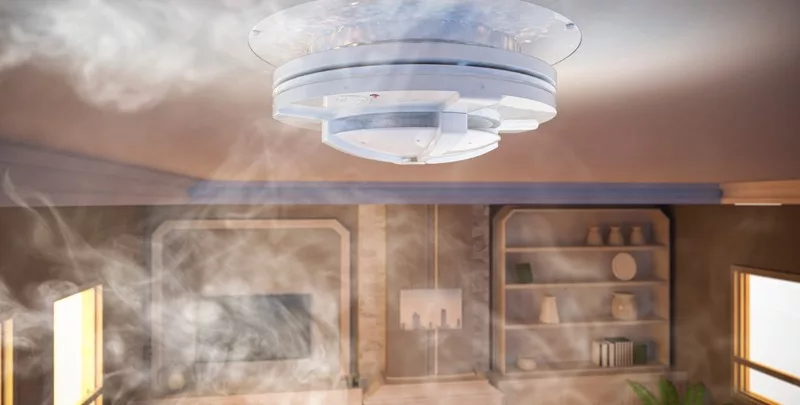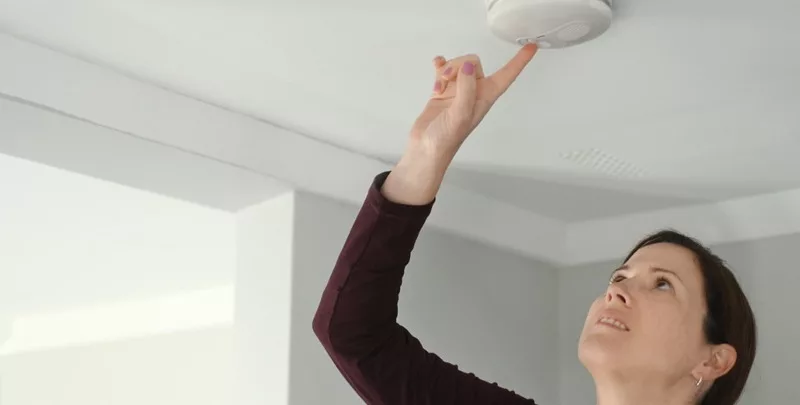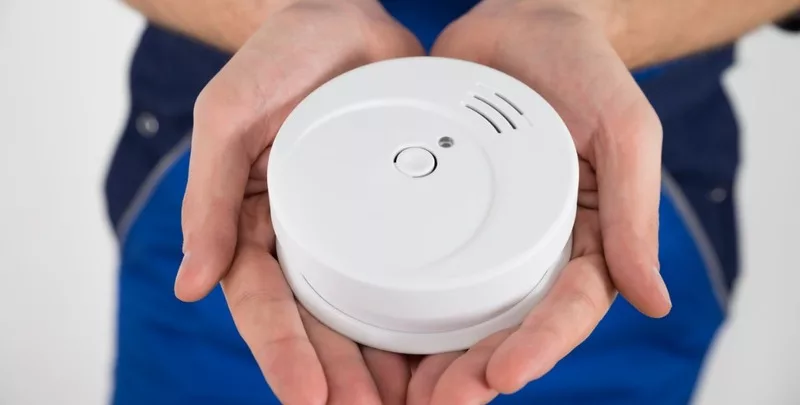4 Smoke Alarm Solutions for Your Home

Most people know – or should know – that smoke alarms are required by law to be installed in every home and business. But what are the right smoke alarm solutions for your home?
While everyone’s home situation is different in all kinds of ways, from the size of the property to the number of people living there, there’s no doubt that smoke alarms are the best precaution you can take to avoid the potential tragedy of a house fire.
There are specific laws and regulations in all states and territories that refer to smoke alarms. In modern homes smoke alarms must be hard-wired to the electrical system or have 10-year batteries. Keep reading to find out more about state and territory laws.
We’re taking a detailed look at the importance of smoke alarms, from the different types to their placement and the features you need. These are four smoke alarm solutions for your home.
1. Where Should Smoke Alarms Be Placed?
The number of smoke alarms you need will depend on the size of your home, how many levels there are and the amount of bedrooms and people living there. But the important factor is having smoke alarms in every bedroom, hallway and living area of the home.
In multi-storey homes, make sure a smoke alarm is installed in the ceiling at the top of stairways connecting the levels.
To avoid false alarms, try to keep smoke alarms away from air conditioners, fans and heaters. Steam can also set alarms off, so make sure they’re not too close to the kitchen and bathrooms.
2. What Features Do You Need?
Whatever type of smoke alarm you opt for, it should have certain modern features that will boost its functionality and your safety. It should also be compliant with the Australian Standard for smoke alarms, AS3786.
Here are some key features to look for when you’re searching for your smoke alarm solutions:
- Hush button – This button allows you to stop the ear-piercing sound of a false alarm caused by some cooking or steam from the bathroom.
- Test button – Having a test button is the safest and easiest way to test that your smoke alarm will work when you need it to.
- Battery test – If you’re using a 9V battery, this test feature will warn you when the battery needs changing.
- Escape light – If the alarm goes off late at night or during a power outage, an escape light will give you the best path towards safety.
- Interconnectability – If you have more than one smoke alarm, you can connect them. This means that when a smoke alarm at one end of the house is activated, it will communicate with other alarms and activate them. Both hard-wired and battery-powered alarms can have this feature.
Be sure to confer with a smoke alarm technician to ensure that you choose a unit that has all the features you require.

3. What is Your Smoke Alarm Power Source?
There are a number of makes and models of smoke detectors on the market, but the main choices you need to make are how they function and the power source.
As previously stated, there are specific state and territory regulations when it comes to the power source of smoke alarms. Those choices include:
- Hard-wired smoke alarm – These alarms are powered by your home’s electricity. They are hard-wired to your mains power supply and must be installed by a licensed electrician. These alarms need to be replaced every 10 years. Some models have a backup battery, which means it will continue to work during a power failure.
- 10-year lithium battery – A long-lasting lithium battery means you don’t have to worry about changing the battery for the life of the smoke detector. A decade of uninterrupted monitoring will give you peace of mind but make sure you know how old the unit is.
- 9V battery – These smoke alarms are reliable but require a battery change every year. If you have this kind of smoke detector, make a specific date every year to change the battery. A battery test feature will remind you when this is necessary. In some states these alarms are illegal in homes built after 1997.
4. How Does Your Smoke Alarm Work?
Aside from the choice of power source, there are two main types of smoke detectors in terms of how they function. These are:
- Ionisation – Ionisation smoke alarms are best at detecting significantly flaming fires. The flames emit particles that react with the radioactive material in the unit, which activates the alarm. As household fires are typically more smoke-heavy than flame-heavy, this type may not be the best smoke alarm solution for your home. They also tend to be activated by the kind of heat that comes from a kitchen.
- Photoelectric – This type of unit is better at detecting fires that are smoky and smouldering – the more typical household fire. These types of smoke detectors are highly recommended for home use. They function by using a light beam that identifies visible smoke when it enters the chamber. When that smoke reaches a particular volume, the alarm is activated. Photoelectric alarms are also less likely to be set off by cooking.

Smoke Alarm Regulations Nationally
While smoke alarms are mandatory in all homes and businesses around Australia, the details vary between states and territories. To ensure you’re complying with your local laws, here are some of the specific regulations:
- Australian Capital Territory – All homes built or renovated since 1997 must have at least one mains-powered alarm (photoelectric preferred).
- New South Wales – At least one alarm per home level/apartment, mains-powered and interconnected recommended.
- Northern Territory – At least one photoelectric alarm required, mains-powered or with a 10-year battery.
- Queensland – Interconnected photoelectric alarms that are mains-powered or have a 10-year battery (since 2017).
- South Australia – At least one alarm per home that is mains-powered or has a 10-year battery. New homes and extensions must have interconnected alarms.
- Tasmania – At least one alarm per home, mains-powered or with a 10-year battery.
- Victoria – At least one alarm per home, photoelectric recommended. Must be mains-powered with battery backup in all homes constructed since 1997.
- Western Australia – At least one mains-powered alarm per home. Alarms with a 10-year battery are allowed when mains power is not possible.
In Summary
When it comes to finding the right smoke alarm solutions for your home, there are choices to be made but the bottom line is this – alarms are mandatory. Smoke detector installation has been written into law around the country, so it’s only a matter of finding the make and model of smoke alarm that suits your needs and budget – just make sure it complies with Australian standards and local regulations.
Please note: This information is provided for advice purposes only. Regulations differ from state to state, so please consult your local authorities or an industry professional before proceeding with any work. See our Terms & Conditions here.